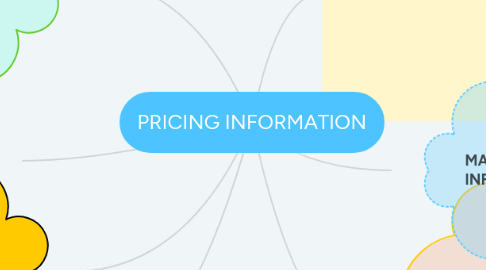
1. COST AND COMPETITION
1.1. many people offer the same product
1.1.1. each lack the ability to influence price
1.1.1.1. ex: market for wheat
1.2. as markets change price is exposed overtime
1.2.1. example: CD PHONE BOOKS
1.3. some cause information auctions
1.3.1. get sold to the highest bidders
2. PROMOTIONS
2.1. measurement of demand on product
2.2. can estimate price sensitivity
2.3. often sent to preexisting customers
2.3.1. sometimes a welcome promo
3. COST LEADERSHIP
3.1. if you can't make yours different just sell a lot of it
3.1.1. this means a lower unit price
3.1.2. usually make less of a profit per unit
3.1.3. works well with information goods because its cheap to reproduce
4. PERSONALIZING YOUR PRODUCT
4.1. understanding the customer is the best way to do this
4.1.1. product is not a commoditiy
4.1.2. make sure yours is special
4.1.2.1. no competitors
5. COST OF PRODUCING INFORMATION
5.1. -expensive to produce but cheap to copy
5.2. -information in digital form is first copy problem
5.2.1. once first is produced the rest cost close to nothing
5.2.2. the more you produce the lower the production cost -> economies of scale
5.3. producing information often is a sunk cost meaning it cannot be recovered if it doesn't do well.
5.3.1. also loose money from marketing if it dousing work
5.4. selling a copy as an experience cost close to nothing - marketing is cheap on information goods
6. GROUP PRICING
6.1. Price sensitivity: those that are more sensitive to prices are often offered a different price to accomadate
6.2. Sharing: hard to have one person manage or be accountable for all information goods someone wants to consumer
6.3. Network Effect: the value to an individual depends on how many other members of his group the the product more members of the group will fall to that norm
6.3.1. Microsoft office
6.4. Lock in: when an organization chooses to standardize on a particular product, it may be expensive to retrain in another
6.4.1. microsoft
7. MARKET STRUCTURES FOR INFORMATION GOODS:
7.1. the dominant firm model
7.1.1. has dominance over smaller rivals
7.1.1.1. ex:microsoft
7.2. differentiated product market
7.2.1. more producing similar info but there is some variety
7.2.1.1. ex: TV & Film

